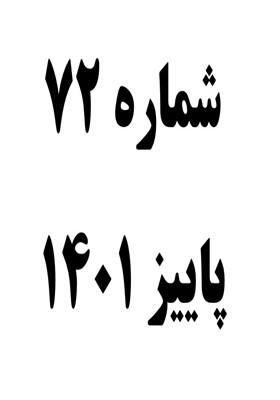طراحی مدل برنامه درسی بر اساس واقعیتافزوده در نظام آموزش ابتدایی ایران
محورهای موضوعی : علوم تربیتی
سمیه حقیقت
1
,
حمیدرضا معتمد
2
*
,
علیرضا قاسمی زاد
3
![]()
1 - دانشجوی دکتری مدیریت آموزشی، واحد کازرون، دانشگاه آزاد اسلامی، کازرون، ایران.
2 - *2 استادیار مدیریت آموزشی، واحد کازرون، دانشگاه آزاد اسلامی، کازرون، ایران.
3 - گروه مدیریت آموزشی، واحد کازرون، دانشگاه آزاد اسلامی، کازرون، ایران
کلید واژه: برنامه درسی, فن آوری واقعیت افزوده, نظام آموزش ابتدایی,
چکیده مقاله :
هدف اصلی پژوهش حاضر، طراحی مدل برنامه درسی بر اساس واقعیت افزوده برای نظام آموزش ابتدایی ایران است. روش پژوهش حاضر از نوع کیفی است که با استفاده از روش تحلیل مضمون و به شیوه استقرائی، عناصر برنامه درسی مبتنی بر فناوری واقعیت افزوده شناسایی و استخراج شدند. جامعه آماری پژوهش، متخصصان و صاحب نظران برنامه درسی و کارشناسان و متخصصان تکنولوژی آموزشی و متخصصان حوزه IT و تعدادی از معلمان مراکز مختلف آموزشی کشور بود که بر اساس نمونه گیری هدفمند 32 نفر انتخاب شدند. ابزار پژوهش، مصاحبه نیمه ساختاریافته بود که تا حد اشباع ادامه یافت. در نهایت شبکه مضامین با استفاده از روش آتریاد - استرلینگ کدگذاری، تحلیل و ترسیم شد. بهمنظور بررسی روایی و پایایی این پژوهش، از روش ارزیابی گوبا و لینکلن (1989) استفاده شد. بدین منظور، چهار معیار:1 - مقبولبودن 2- تائیدپذیری3ـ اطمینانپذیری4ـ انتقالپذیری برای ارزیابی مدنظر قرار گرفت. از منابع مکمل با مراجعه به تحقیقات علمی و مقالات و کتابهای مختلف دربارۀ موضوع پژوهش جهت غنای داده ها و افزایش اعتبار آنها مورد استفاده قرار گرفت. همچنین، پژوهشگر با بیان مفاهیم مصاحبه-های مختلف نزد پژوهشگران دیگر و همچنین درخواست بررسی متن مصاحبه ها توسط مصاحبه شوندگان آنها را راستی آزمایی کرد . پس از کدگذاری و تحلیل دادههای مصاحبه، تعداد 52 مضمون پایه استخراج شد. از این مضامین پایه تعداد 4 مضمون سازماندهنده و در نهایت 1مضمون فراگیر که شکل دهنده عناصر برنامه درسی مبتنی بر فناوری آموزشی بودند، شناسایی و استخراج شدند.
The main purpose of this study is to design a curriculum model based on augmented reality for the Iranian primary education system. The method of the present research is qualitative in that the elements of the curriculum based on augmented reality technology were identified and extracted using the method of content analysis and inductive method. The statistical population of the study was curriculum specialists and experts and experts in educational technology and IT specialists and a number of teachers in different educational centers of the country who were selected based on purposive sampling of 32 people. The research tool was a semi-structured interview that continued to saturation. Finally, the network of themes was coded, analyzed and plotted using the Atriad-Sterling method. In order to evaluate the validity and reliability of this study, the evaluation method of Goba and Lincoln (1989) was used. For this purpose, four criteria: 1- Acceptability 2- Verifiability 3- Reliability 4- Portability was considered for evaluation. Complementary sources were used to enrich the data and increase their validity by referring to scientific research and various articles and books on the subject of research. The researcher also verified the concepts of different interviews with other researchers and also asked the interviewees to review the text of the interviews. After coding and analyzing the interview data, 52 basic themes were extracted. From these basic themes, 4 organizing themes and finally 1 comprehensive theme that formed the elements of the curriculum based on educational technology were identified and extracted.
_||_

